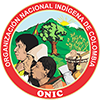Barasano
OTHER NAMES:
Southern Barasano, eduria, yebá-masã, yepa-mahsã, yepá-matsó, hanerã (or janena), paneroa, komea, teiuana (or taiwano), banera yae, hanera oka
GEOGRAPHICAL LOCATION:
Amazon. Colombia and Brazil Their territory is included in the Eastern Part of Vaupés, they live in Caño Colorado, Pirá-Paraná River. This indigenous people is also known as southern barasana, Janera, Panera
POPULATION:
Its population is estimated at 350 individuals. They are scattered in several departments of the country. The highest population concentration of this indigenous people is found in the municipality of Mitú - Vaupés with a total of 162 indigenous people, followed by the municipality of Leticia - Amazonas with a total of 40 people. The distribution of the barsana population by gender corresponds to 177 men and 173 women. It is one of the villages in which it is distinguished by its low population density. We found barsana population in other regions of the country (Valle, Guaviare, Meta) although in a very small amount compared to the main settlements.
LANGUAGE :
Barasana-taiwano
Their language belongs to the Tucano Oriental family, characteristic that groups them in the so-called complex of the region of the Eastern Part of Vaupés, they live in Caño Colorado, Pirá-Paraná River. It is one of the 15 languages of the eastern Tucano family among them (bara, barasana - taiwano, carapana, desano, kubeo, makuna, tatuyo, tukano, tuyuka, wanano, yurutí and pisamira
CULTURE:
Traditional dress, music and instruments such as marimba, big drums, flutes and cununos (small drumbs), traditional medicine, production techniques in agriculture, fishing, hunting and animal husbandry, are part of their identity.
The elders tell that, at the beginning of humanity, the anaconda snake, climbed the river and left the different groups that today live in the Vaupés jungle. Since then, the Barasana del Pirá-Paraná have lived in the jungle, gradually discovering their secrets, without destroying the life of plant and animal species. Many rivers flow through the jungle. They are people of canoes, harpoons, traps and hooks. Among the trees in the jungle they learn to choose the one they will transform into a canoe.
The myth among the Barasana relates their daily lives with the world of heroes and beings of nature, ordering the world in an intelligible way. The symbology is highly sexualized. At parties it is danced, myths are recited and hallucinogens are taken. The "Yurupari" secret flutes stand out for their importance in festivities and ceremonies.
HOUSING :
The barasana live in multi-ethnic settlements. However, as is the case of Piedra Ñi, these are often relocated based on inter-ethnic tensions and offers from the territory. Traditionally, the maloka, rectangular, was the center of social, economic and ceremonial organization. In recent years, the pattern of nucleated dwellings around a maloka has been adopted.
ORGANIZATION:
Traditionally the main authority is the chief of the maloka, however, there are other characters that perform religious functions such as Payé, the kumu, the specialist in songs and dances and the teacher of myth recitation. They are considered allies of the makuna.
ECONOMY :
Combine itinerant agriculture with hunting, fishing, gathering and crafts. The land for sowing opens by knocking down a small section of jungle at the beginning of summer and burning before the rains begin. The main crop is the bitter yucca kî, sown by women, who also plant sweet potatoes, chonque, yams, pumpkins, sugar cane, bananas, pineapple, cashew and other fruit trees. The men sow corn, chontaduro, avocado, wamü, tobacco, coca and yajé.
Women are potters and make different kinds of clay pots and the large pan or "budare" to make casabe of cassava. Men are responsible for basketry and carpentry.
They hunt with blowgun, bow and arrow, javelin or shotgun. Among the dams are the danta, the peccary, monkeys, armadillo, chacures and different birds. They collect wild fruits, meca jia ants, grasshoppers, bee larvae and "mojojoy" (wadoa) and edible beetles. They generally fish with hook and have canoes made by themselves.
The kûmû (shaman) knows how to use yajé, coca and tobacco to interact with the spiritual world and promote the success of the economy, food and health.
The division of labor by sex and age is presented. Men's work consists of preparing the land, fishing, hunting and manufacturing crafts, while women are responsible for keeping the chagra clean, harvesting and preparing food. Horticulture is the basis of its economy with the traditional logging and burning system.
The central crop is bitter cassava and its derivatives are the source of daily food. On a smaller scale they grow corn, squash, bananas, sugar cane, activities that complement hunting, fishing and the collection of worms, ants and wild fruits. Recently they have ventured into commercial fishing.
Sources:
Arango y Sánchez. Los pueblos indígenas de Colombia 1997.
Dane: Censo1993 -Proyección 2001-.
Hernández, Jaime Alberto. Migración, asentamiento y contacto cultural en las comunidades indígenas del río Mirití- Paraná, Tesis de grado, Departamento de Antropología, Facultad de Ciencias Humanas, Universidad Nacional, Santa Fe de Bogotá,1991.
Telbán, Blas. Grupos étnicos de Colombia, etnografía y bibliografía, tercera colección 500 años, ediciones Abya-Yala, Movimientos Laicos para América Latina, Quito, Ecuador, 1988.
Fundación Hemera - Etnias de Colombia
Los Pueblos Indígenas de Colombia en el umbral del Nuevo milenio – DNP – Departamento Nacional de Planeación
-Recuperado de: TodaColombiaPuebloBarasana
-Ministerio de Cultura. República de Colombia. Lenguas Nativas de Colombia Lengua BARASANO
-Ministerio de Cultura. República de Colombia. BARASANO Los hijos de Mení y Warími.
-Atlas sociolingüístico de los pueblos indígenas en América Latina. Tomo I. 2009. UNICEF



